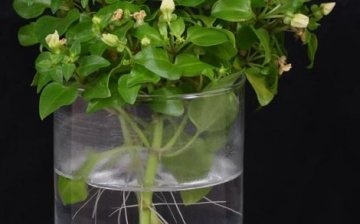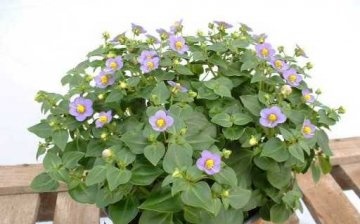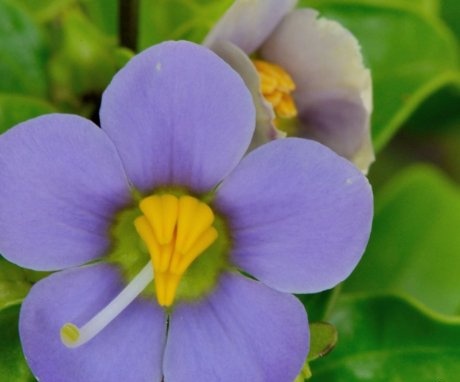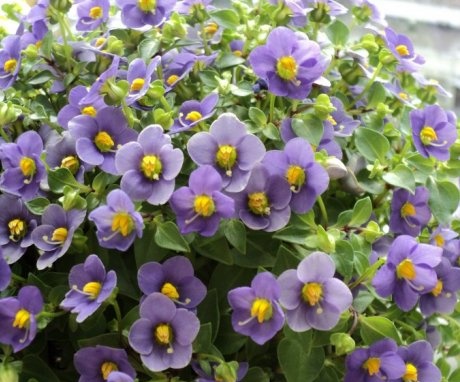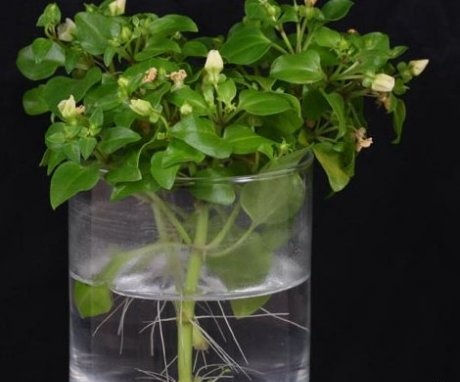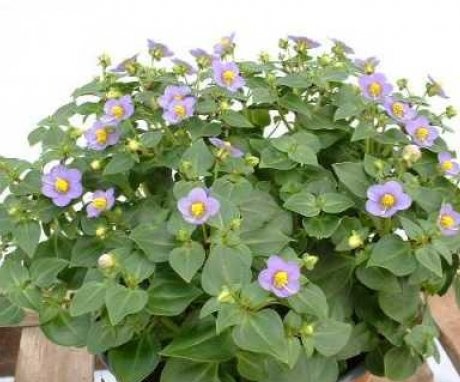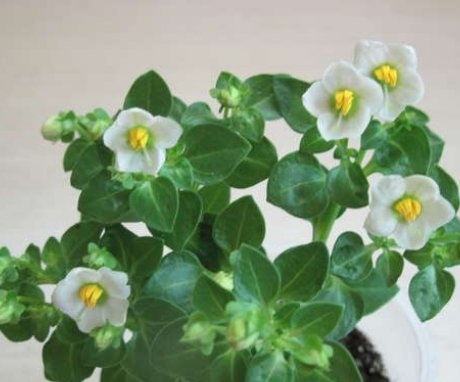Exakum: popular types and growing rules
Often, flower growers are looking for unusual plants that would decorate the house, garden or verandas. Rare and unpretentious flowers are quite difficult to find. Exakum belongs to this category of ornamental plants. An unpretentious and beautiful flower will make any corner of the garden one of the most attractive. It is easy to grow exacum, it does not require special skills from a florist. But compliance with the basic rules of agricultural technology will help grow a lush bush and achieve luxurious flowering. For successful cultivation, the characteristics of this outlandish plant should also be taken into account.
Content:
- Description of exakum and its types
- Growing conditions
- Reproduction exakum
- Plant care
- Diseases and pests
Description of exakum and its types
The plant belongs to the gentian family. It grows wild in the vastness of South and East Asia. The plant is found in Malaysia and Greece. In total, there are about 30 types of exakum. In the middle lane, they tried to grow many species, but only three took root.
Exakum is:
- A small bush, reaching a height of no more than 50 cm.
- Leaves are fleshy, shiny, bright green, pointed at the tips. To many, they resemble a miniature version of greenery. anthurium.
- Flowers are spread over the entire surface of the bush.
- During the flowering period, it is completely covered with delicate inflorescences, reaching no more than 1.5 cm in diameter.
- The color of the flowers varies - snow-white, purple, blue or lilac. The middle of the flower is decorated with yellow stamens.
- The plant has a wonderful scent that spreads throughout the room or garden. For this property, it is also called violet.
Since not all species are able to develop and bloom at home, florists distinguish only three of them. They are used to decorate rooms, halls, verandas, terraces or gardens. In culture, exacum is grown as an annual, in the wild, it is known as a perennial plant.
There are the following types:
- The related exakum is one of the most common plant species. Its foliage is highly branched and forms a spherical shape, strewn with flowers. It reaches a height of 30 cm. The leaves are juicy, fleshy, bright green. The most common varieties of this species are "Blue Dwarf", "White Gnome", "Blue Eyes".
- Ekzakum three-veined - another interesting view. Florists love to grow it for its large foliage and beautiful flowers. The plant reaches 50 cm in height and is used for landscaping balconies or terraces. This type of exakum is resistant to cold weather and temperature extremes.
These two species have taken root in the middle lane and are successfully grown by flower growers. The rest are not adapted for growing in apartments or gardens. More often the exacum blooms once and ends its life cycle. But many "force" the plant to bloom in the second year. In this case, the flowering will no longer be as abundant and lush as in the first year. Florists recommend planting the flower as an annual.
Growing conditions
Exakum thrives in warm and sunny locations. If you plan to grow a flower in an apartment, choose south windows or southeast windows for it. Ekzakum responds well to direct sunlight a little further from the window.The more light it receives, the better it will bloom.
The air humidity in the room also plays an important role.
If the room is too hot, constantly spray the air and the plant itself. Place the Exakum near aquariums or mini-ponds. The pot can be placed in wet peat or pebbles. An important condition is the degree of aeration in the room. The room should not be stuffy. To do this, you need to open the windows, but not create drafts.
The flower loves loose and fertile soil. The acidity is neutral. Usually, a soil mixture is selected from turf, leafy earth, humus, compost and some sand. In such a substrate, the plant will develop rapidly and delight with luxurious flowers.
Reproduction exakum
More often, flower growers use the seed method of propagation. The vegetative method is also popular, but less so than the seed method. Cuttings are cut from a one-year-old plant in early spring. They quickly take root and take root. It is recommended to cut off the apical branches with three internodes. Rooted either in water or in a substrate. The cuttings will bloom in three to four months.
The seed method is more painstaking and is of interest to florists with experience:
- Seeds are sown in winter so that in spring the sprouts have already begun to gain strength and color.
- The seed is mixed with sand and spread gently on the soil surface. You don't need to cover it with earth.
- The container is covered with foil or glass. The room temperature is kept at about 20 °.
- When two or three leaves are formed on the sprouts, exacum dive in separate flowerpots.
The air temperature for growing a plant should be between 18 ° and 20 °. In winter, not lower than 15 °. If a related exakum is grown, there should be no sudden temperature changes in the room. The plant will not stand this and will die.
Plant care
Care exakum implies standard procedures:
- Water the flower as needed. Do not overfill the plant, otherwise it will die from root rot. To avoid this, 3 cm of drainage is poured onto the bottom of the flowerpot, the pot must be with holes.
- If it's too hot in the room or outside, sprinkle. Use settled, warm water.
- If the soil mixture is composed of all the necessary components - sod, leafy soil, humus, compost and sand - the plant does not need feeding. If something is missing, a complex can be added once every two weeks. mineral fertilizers before and during flowering. Overfeeding the exacum is undesirable. He will begin to fatten, you can never wait for flowering.
- Be sure to remove faded inflorescences during the flowering period. The measure is needed to maintain the decorativeness of the exakum.
- In winter, the plant is cut to about half. Water as the soil dries out. Usually faded exacum is removed and a new plant is acquired.
Diseases and pests
Among the diseases, only root rot can be distinguished. It can appear due to improper care. Low temperatures and excessive moisture in the soil contribute to the appearance of rot. It is difficult to save a plant from such a misfortune.
To do this, take it out of the pot, wash it. root system and examine. The affected areas are cut off and transplanted flower in fresh soil mixture.
Among the pests, spider mites, felt mites and aphids.
To combat these parasites, insecticides are used. The plant is washed from the shower with warm water. If the exakum is looked after and favorable conditions are created for it, neither pests nor diseases will appear. The plant will delight you of amazing beauty with flowering and dense foliage.
More information can be found in the video:






